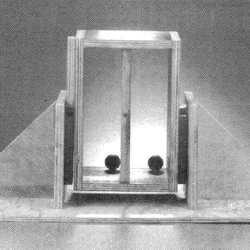Source Institutions
Source Institutions
Add to list Go to activity
Activity link broken? See if it's at the internet archive

Learners compare the properties of two balls that appear identical. One ball bounces, while the other ball "thuds." The “bounce” ball is made of the polymer polybutadiene (-C4H4-). The long chains of polybutadiene are linked together with sulfur (S) atoms. This molecular structure springs back when it is compressed producing a substance that bounces. The “thud” (non-bouncy) ball is made from a combination polymer, poly(styrene-butadiene) (-C8H6-C4H4-), which has more closely packed molecules. This structure does not bounce back but absorbs the energy of the impact. Both types of polymer are used in automobile tires so that tires will “spring back” and also absorb the force of the bumps on the road.
- 45 to 60 minutes
- Under 5 minutes
- Over $20 per group of students
- Ages 6 - adult
- Activity
- English
Quick Guide
Materials List (per group of students)
- Smart/Stupid Balls (one of each kind is included in a package)
- 1/2 in. plywood: one piece 1 ft by 2 1/2 ft (the base piece)
- Two pieces, 7-in. squares (the top and bottom of the rectangular box)
- Two pieces, 7 in. by 12 in. (the sides of the rectangular box)
- One piece 7 in. by 12 in. (divides the box in half)
- Two pieces, 9-in. squares (side support for the raised box)
- Two pieces, one 9-in. square cut in half diagonally to make two triangles (side support for the raised box)
- Four pieces, 1 1/2 in. by 5 in. (the two attached to the sides of the box and side supports to prevent 360° rotation of the box)
- Two pieces of Plexiglas, 7 in. by 13 in. (the front and back of the rectangular display box)
- 42 screws, longer than the plywood thickness
- Two pieces, 1 1/2 in. heavy duty dowels
Subjects
-
Engineering and Technology
-
Engineering
- Chemical Engineering
-
Engineering
-
Physical Sciences
- Energy
- Chemistry
-
States of Matter
- Solids
Audience
To use this activity, learners need to:
- see
- touch
Learning styles supported:
- Involves hands-on or lab activities
Other
Components that are part of this resource:
This resource is part of:
Access Rights:
- Free access
By:
Rights:
- All rights reserved, Oregon Museum of Science and Industry, 1997
Funding Source:
- National Science Foundation
